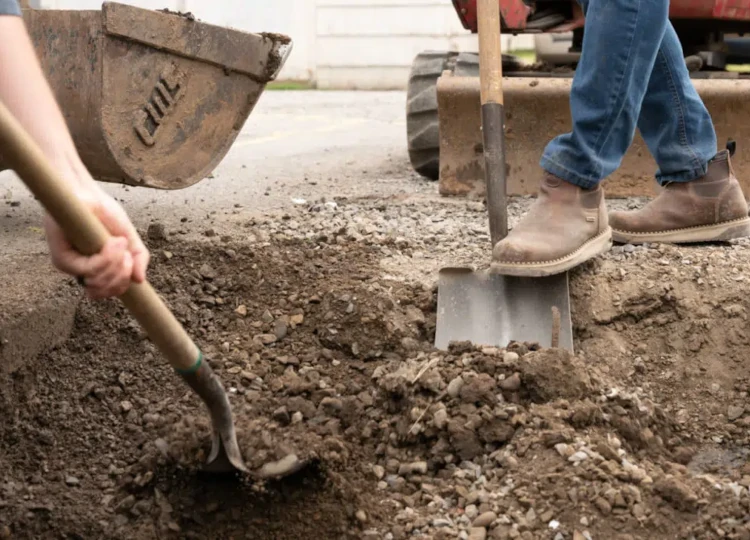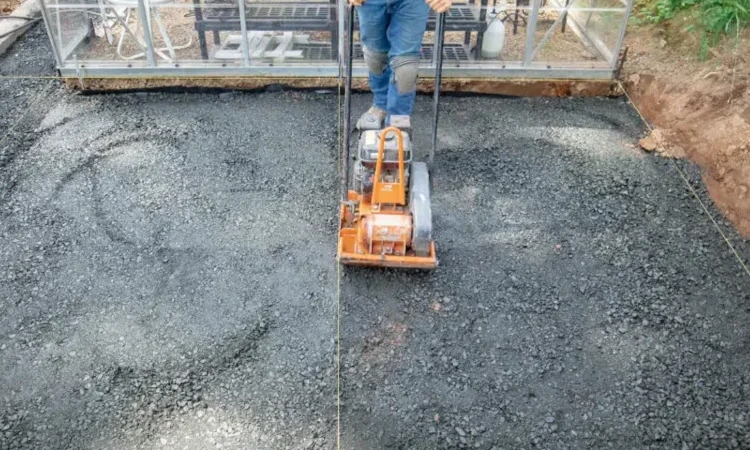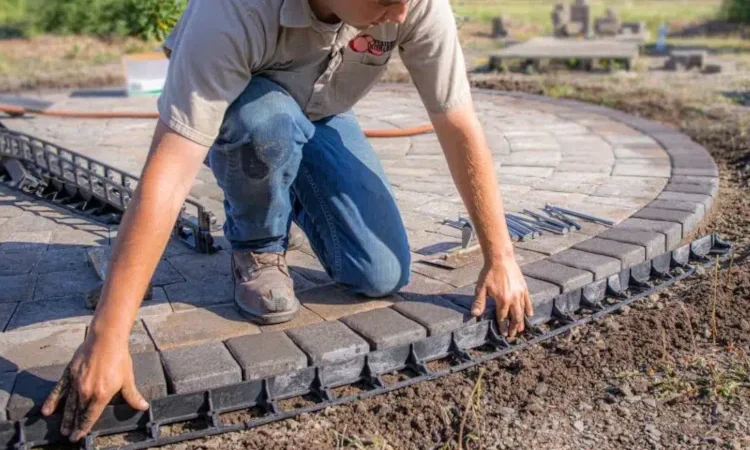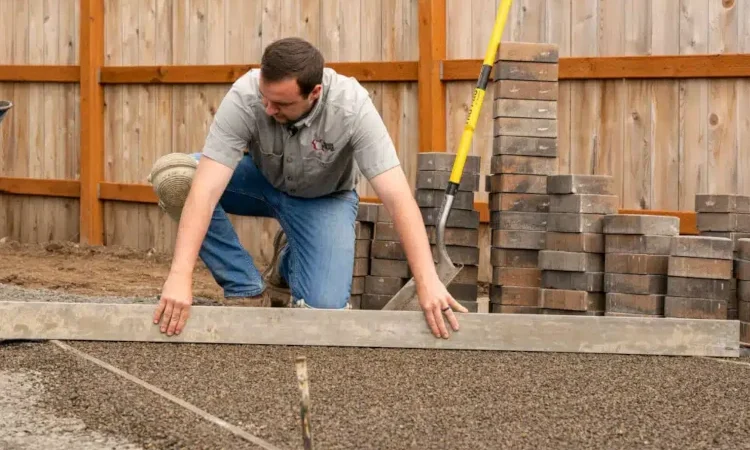Excavation

Excavation is a critical phase in the site preparation process for installing pavers. Proper excavation ensures that the ground is adequately prepared, providing a stable foundation for the subsequent layers of base material, sand, and the pavers themselves. Here’s an expanded overview of the excavation process:
1. Site Marking and Layout:
- Define Project Boundaries: Clearly mark the boundaries of the project area using stakes and string, outlining the location where the pavers will be installed.
- Consider Layout Design: Take into account the layout design, pattern, and any additional features like curves or borders.
2. Clearing the Area:
- Remove Vegetation: Clear the site of any grass, weeds, plants, or other vegetation using appropriate tools such as shovels, rakes, or sod cutters.
- Address Roots: If there are large roots or unwanted vegetation, take measures to remove or cut them, ensuring they won’t affect the stability of the paver installation.
3. Topsoil Removal:
- Excavate Topsoil: Remove the top layer of soil, known as topsoil, to expose the subsoil. This helps create a stable foundation and minimizes settling.
4. Depth Considerations:
- Determine Excavation Depth: Determine the required depth of excavation based on the type of pavers, the base material, and any additional considerations such as drainage requirements.
- Account for Slope: If the area needs to be sloped for proper drainage, ensure that the slope is consistent and complies with local building codes.
5. Uniform Excavation:
- Achieve Uniform Depth: Excavate the entire area to a uniform depth, using measuring tools and levels to ensure consistency. Uneven excavation can lead to an uneven surface and affect the stability of the pavers.
6. Equipment and Machinery:
- Use Excavation Equipment: Depending on the size and scale of the project, use appropriate excavation equipment such as backhoes, excavators, or skid-steer loaders to expedite the process.
7. Surveying (For Larger Projects):
- Consider Surveying: For larger projects or those with specific elevation requirements, consider using surveying equipment to accurately measure and mark elevations.
8. Excavation Depth Control:
- Verify Excavation Depth: Periodically verify the excavation depth during the process to ensure that the desired depth is consistently achieved.
9. Slope and Grading:
- Establish Slope and Grading: If the project requires a slope for water drainage, establish the desired slope and grading during the excavation phase.
Excavation is a foundational step that sets the stage for a successful paver installation. Attention to detail, adherence to design specifications, and compliance with local regulations are crucial during this phase to ensure the stability, longevity, and aesthetic appeal of the paved surface.






